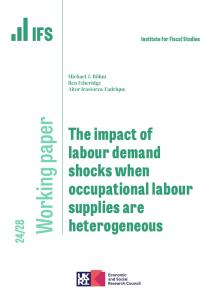We measure selection among high-skilled emigrants from Germany using predicted earnings. Migrants to less equal countries are positively selected relative to nonmigrants, while migrants to more equal countries are negatively selected, consistent with the prediction in Borjas (1987). Positive selection to less equal countries reflects university quality and grades, and negative selection to more equal countries reflects university subject and gender. Migrants to the United States are highly positively selected and concentrated in STEM fields. Our results highlight the relevance of the Borjas model for high-skilled individuals when credit constraints and other migration barriers are unlikely to be binding.
Authors

Research Fellow University of Surrey
Matthias is a research Fellow of the IFS, a Professor in the School of Economics at the University of Surrey and a Research Fellow at the IZA.

Fabian Waldinger


Journal article details
- Publisher
- Review of Economics and Statistics
- Issue
- November 2017
Suggested citation
Netz, N et al. (2017). 'The Selection of High-Skilled Emigrants' (2017)
More from IFS
Understand this issue

If you can’t see it, you can’t be it: role models influence female junior doctors’ choice of medical specialty
24 April 2024

Retirement is not always a choice that workers can afford to make
6 November 2023

Big firm, little firm: are differences between companies driving inequality and holding back growth?
30 August 2023
Policy analysis

How do the last five years measure up on levelling up?
19 June 2024

The Conservatives and the Economy, 2010–24
3 June 2024

A decade and a half of historically poor growth has taken its toll
3 June 2024
Academic research

The impact of labour demand shocks when occupational labour supplies are heterogeneous
28 June 2024

Labour market inequality and the changing life cycle profile of male and female wages
15 April 2024

Interpreting cohort profiles of lifecycle earnings volatility
15 April 2024